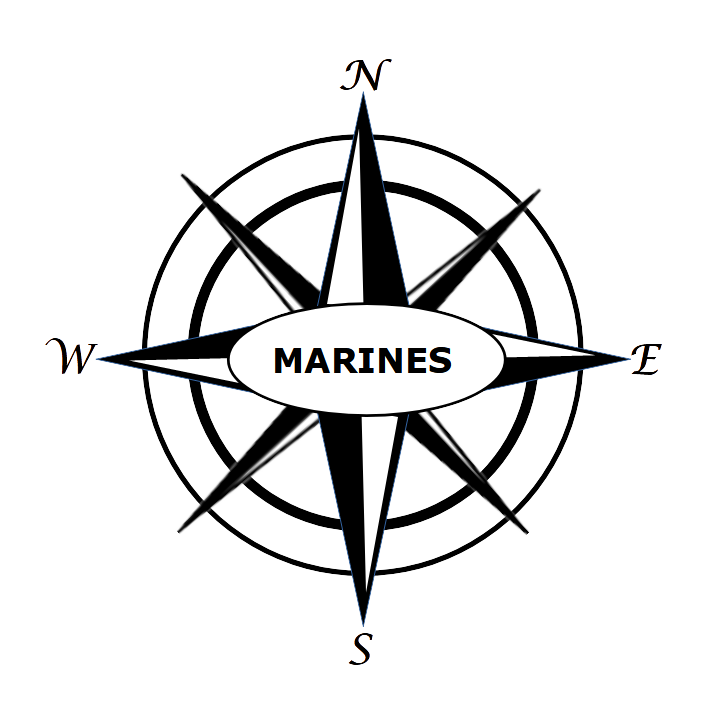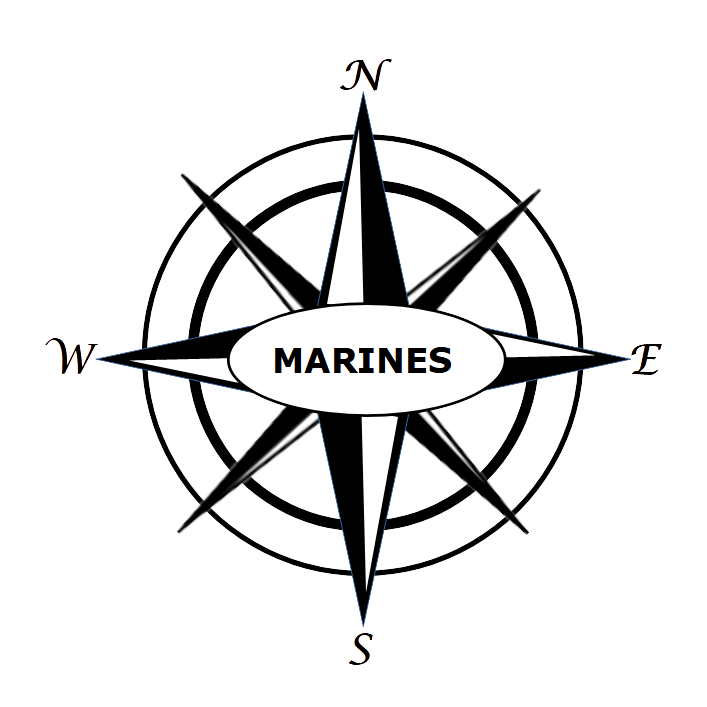Compass Points - Broken Window Theory
Early intervention prevents larger conflicts
October 28, 2024
.
The Broken Window theory tells
From just one crack momentum swells
And chaos grows from lack of care
Until the social fabric tears.
-- Broken Window Theory (excerpt from poem)
.
What does Marine Corps crisis response have to do with the Broken Window Theory?
Back in 1982 researchers Wilson and Kelling wrote their famous article coining the term, "Broken Window Theory." The authors said that if one broken window in a neighborhood building was left unrepaired, that broken pane would lead to more broken windows, additional acts of disorder, and then to more serious and more violent crime. Early intervention prevented more serious crime.
While the Broken Window Theory has been hotly debated and disputed from its inception, it is the critics and not the theory that have faded. No critic has ever explained how increasing disorder and minor crimes ever make a neighborhood better. Unchecked disorder makes things worse. The authors cited below of the article, “Reimagining Broken Windows: From Theory to Policy” conduct a comprehensive three-decade review of the Broken Window Theory and conclude, “We predict that the broken windows perspective will be around for many more decades to come.”
.
===================
.
As Wilson and Kelling (1982:34) suggested,
… serious street crime flourishes in areas in which disorderly behavior goes unchecked. The unchecked panhandler is, in effect, the first broken window. Muggers and robbers, whether opportunistic or professional, believe they reduce their chances of being caught or even identified if they operate on streets where potential victims are already intimidated by prevailing conditions. If the neighborhood cannot keep a bothersome panhandler from annoying passersby, the thief may reason, it is even less likely to call the police to identify a potential mugger or to interfere if the mugging actually takes place.
. . . We predict that the broken windows perspective will be around for many more decades to come—its enduring qualities far exceed a smartly coined phrase.
-- Reimagining Broken Windows: From Theory to Policy
.
===================
.
The Broken Window Theory illustrates not just the dangers of allowing unchecked disorder in local neighborhoods, it also serves as a warning about allowing unchecked disorder in international relations.
China has been attacking Philippine ships in the South China Sea for months. As Andrew J. Masigan of The Philippine Star has written, "In pursuit of its strategy, China has waged increasingly aggressive attacks on Philippine vessels in both the Panatag and Ayungin Shoals. A total of 10 attacks have been recorded since August 2023, each with increasing intensity."
China is also currently flexing its naval muscles in other ways.
.
-- The New York Times reports China is now attacking Vietnamese fishing boats.
"Bullied By China At Sea, With The Broken Bones To Prove It"
-- Reuters reports, "Taiwan Reports Chinese 'Combat Patrol' After Beijing Slams U.S. Arms Deal"
-- USNI News reports of the movement of China's surveillance ships past Japan and its carrier strike group transiting the Taiwan Strait, "Chinese Surveillance Ships Now In Philippine Sea, PLAN Carrier Transits Taiwan Strait."
-- Finally, the Wall Street Journal reports that China's bad acts are not limited to the South China Sea, "China’s Fleets Overwhelm Fishing In Peru"
.
Chinese actions are classic Broken Window Theory acts of low-level disorder and crime. Respond firmly and more serious crime is prevented. Do nothing and more serious and more violent crimes are on the way.
How can the US respond to China's actions in and around the South China Sea and elsewhere? The US cannot send in a carrier strike group, cannot order a strike from B-52s, and cannot jump in the 82nd airborne division. For low level acts, massive response is not effective and would never be approved. What is needed is a highly mobile, highly flexible, crisis response force that can arrive quickly to the scene of trouble, remain in place and provide options to deter, assist, and fight.
Obviously, this kind of flexible force and flexible response is just what the Navy - Marine Corps team have provided for decades. A Marine Expeditionary Unit or even a smaller Special Purpose MAGTF give the US the ability to respond to bad acts in a measured way. When the US has the ability to augment and upgrade those initial small units by using prepositioning ships and fly in echelons, then the arrival of even a small Marine force is a large deterrent.
China has its own theory. Not the Broken Window Theory but the theory of "kill the chicken to scare the monkey."
.
===================
.
"Kill the chicken to scare the monkey” is among China’s cornerstone strategies to fulfill its hegemonic ambitions in the Indo-Pacific. It is derived from a Chinese proverb that refers to taking aggressive actions to subdue a weaker opponent to intimidate a larger, more powerful adversary. In this case, the weaker opponent is the Philippines and the larger adversary is the US.
China has three objectives in employing this strategy. The first is to send a signal to the other claimants of the South China Sea that the Chinese Communist Party (CCP) is willing to resort to aggressive actions to assert its claims.
The second is to pander to the Chinese population. See, there exists a social contract between the CCP and the Chinese people. In exchange for surrendering their rights and freedoms, the CCP guarantees increasing personal wealth for Chinese households. But with the Chinese economy now in shambles and personal wealth diminishing, the CCP has to show that it is doing something substantive for its people. Hence, reclaiming “historical territories” has become the national consolation prize.
Third and most significantly, to send a signal to the US that the CCP will not relent in its campaign for territorial expansion.
-- Andrew J. Masigan - The Philippine Star
.
===================
.
The Broken Window Theory says one broken window can lead to more and more serious crime. In the same way, if China's low level bad acts are left unchecked, more trouble will follow. China's theory is that it can turn the US into a monkey and China can "scare the monkey." No matter the theory, for the sake of the Nation, the Marine Corps needs to get its focus back on global crisis response.
.
- - - - -
.
Journal of Research in Crime and Delinquency
Reimagining Broken Windows: From Theory to Policy
Brandon C. Welsh, Anthony A. Braga, and Gerben J. N. Bruinsma
Volume 52, Issue 4
https://doi.org/10.1177/0022427815581399
https://journals.sagepub.com/stoken/default+domain/ZGBnjNmWfJNEZZsRG9cB/full
.
- - - - -
.
PhilStar - 10/16/2024
How Philippine bravery foiled China’s cornerstone strategy
THE CORNER ORACLE - Andrew J. Masigan - The Philippine Star






Good post by CP; I may have talked about this very topic in the comments a time or two. The tie in to 'broken window theory' and measured aggression is appropriate to the topic. The PRC has shown how they push until conditions allow them to consolidate. There has been no real pushing back; it's been more a game fo passive resistance in the face of aggressive PRC action. I've floated the concept of deploying a very small det of US Marines to the most troublesome zones like Second Thomas Shoal. The idea is that the presence of the Marines, like reflagging a commercial vessel, change the dynamics of the game. Now, instead of just the chicken....the monkey is involved and he's not letting go of the peanut. I am fairly certain we can figure out how to push back in the squirt gun wars without blowing stuff up if the PRC can do it. Frankly, just take a page out of the PRC manual for assuming control of shoals in the South China Sea. 1) Invent an excuse to be there. 2) Put more ships and more ships with water cannons on scene than the chicken can. 3) Harass the chicken at all opportunities. 4) Where presence of the other nation is withdrawn, act as if it yours, quickly, so it is too late for them to comeback. 4) Continue until inertia sets in and the area is yours by default. Having a MEU or a SPMAGTF as a backup would be good.
First I have ever heard of either of these theories. Excellent article and bring these two together to illustrate the issues.
1995 I was contemplating a lat move to the intel field. The MSgt took me in the office and tested me on a few things. One was telling him what was at LAT/LONG. Not knowing that I relied on good old map reading techniques and accurately pointed out the place he was asking.
The next thing he asked is where, in the next 10-15 years, in the Pacific region, tensions would become high. I immediately pointed to the South China Sea. The local news had just started covering Chinas increasing activities in that region (I got the Japanese news translations daily from the III MEF G2).
Since that time, of course, they have built islands on the shoals and submerged reefs, probably killing the fishing grounds that were high on their agenda, and have become increasing belligerent toward the countries that surround that area.
I can't agree more that the US should become a bit more visible in the area. There are 4 amphibs in Sasebo and I am understanding that the 31st MEU will only be doing 1 patrol a year vice the 2 they have been doing for decades starting in 2026. So instead of increasing our visibility in that region, we seem to be cutting back. The exact antithesis of what should be happening.